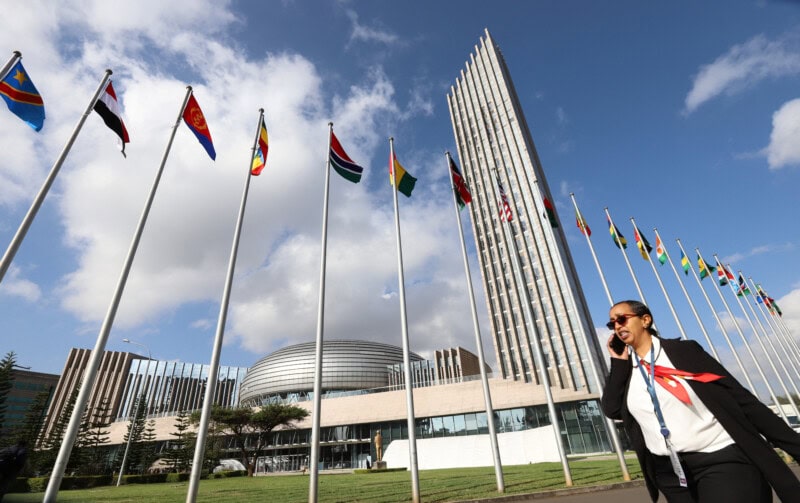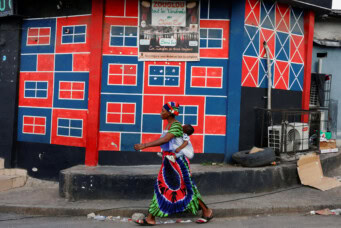Pursuing Unity: Pan-Africanism in Practice
History has proven that a completely politically unified Africa may be impossible to achieve; instead, integration should be pursued with a more limited goal of facilitating faster economic, social, and political progress

Pan-Africanism as an ideology dates back over 400 years; while it has many definitions, what is unmistakably at its core is the desire for the unity of Africa and its peoples. The Organization of African Unity (OAU), established in 1963, was the first institutional framework aimed at achieving this goal. From its beginning, the organization was a compromise between those who wanted to pursue the immediate ideal of political unification of all African states and those who preferred a more limited, gradual integration. The OAU, which was eventually succeeded by the African Union (AU) in 2002, faced significant obstacles in pursuing this ideal of unity. The nature of these challenges faced by the OAU and the AU suggests that there is a need to rethink the essence of Pan-Africanism, specifically regarding the type of unity desired by contemporary actors.
The Origins of Pan-Africanism
The history of Pan-Africanism is centuries old but the official recognition of the concept occurred after the 1900 Pan-Africanist Congress in London. Born from the philosophy of diaspora Africans, the idea was given vent to by a variety of factors, such as the experience of slavery, European racism, and a growing self-realization among Africans. The concept was a cultural and, more significantly, political movement that became a driving force for the African independence movement; nearly 90 percent of the continent was under European control by 1914 and decolonization was not completed until the 1970s. Following independence, the subsequent goal was African integration.
Pan-Africanism can be broadly defined as the intellectual foundation of a desire for unity of Africans in the diaspora, a regional push for African unity, a global movement intended to unite Africa and its people against European hegemony, and the general liberation of the people of Africa and those of African descent. Pan-Africanism aims to achieve four primary objectives. The first is the political unity of Africa that aims to bring the states of Africa under a unified political command, similar to the United States of America. Indeed, the original idea was tagged the United States of Africa. Out of all of Pan-Africanism’s goals, this one is the most pronounced and empirically pursued. The second goal is the equality of all Africans. The third is the racial unity of all Africans. Last, but not least, is cooperation among African states and peoples.
The push for African integration via the mechanism of Pan-Africanism was revived after a lull between 1945 and 1958. This period was marked by a transitional phase, where the ownership of the idea was shifting from the diaspora to those based in Africa, with a larger focus on securing the independence of African states rather than pursuing immediate unity. The Pan-African ideal picked up speed again in 1958 with the first Pan-African conference of independent African states, convened by the President of Ghana Kwame Nkrumah in Accra.
In the second conference in Accra in the same year, Nkrumah guided the call for the creation of the United States of Africa, which would dismantle the artificial colonial boundaries in the continent.
The organization of the United States of Africa would be based on the political entities that had existed before colonization in Africa. This idea came with its own challenges because of the uncertainties regarding the specific borders of pre-colonial entities and the possibility of inter-tribal or kingdom wars. In any case, given the vision of the United States of Africa, it can be concluded that whatever form these boundaries took, they would have existed as sub-units of a larger federal system.
Ultimately, the timing of this call was ill-judged. The whole of the continent had not yet attained political independence and the remaining colonial powers could not be expected to surrender their territories so that a politically unified Africa could be achieved. These obstacles created difficulties for implementing the idea at the time. Since then, the goal of political unification under a federal system has given way to a more practical approach to unification, primarily in the form of the OAU and the AU.
Pan-Africanism and the Organization of African Unity
Despite the attempts by diaspora and African based Africans to forge African integration through the various Pan-Africanist congresses, the OAU is believed to be the first institutional manifestation of the Pan-Africanist desire for African unity. This is because the OAU was more organizationally matured and broadly subscribed to than the previous Pan-Africanist integration projects. In some ways, the OAU developed the idea of Pan-Africanism by taking it beyond just conferences and intellectual reflections: it pursued tangible outputs on the continent, such as providing a well-structured organization for the pursuit of African unity. Through this, organizational and institutional support was provided for the liberation movements in Africa such as UNITA in Angola and the African National Congress in South Africa.
However, the OAU was still ultimately considered a compromise of the core idea of Pan-Africanism. The reason for this lies primarily in the ideological foundation of the organization. Three ideological blocks were influential in the founding of the OAU; specifically the Brazzaville, Monrovia, and Casablanca groups. The Brazzaville group advocated for a realistic regional approach to African unity with the ultimate aim of achieving a continental government. The Casablanca group, in contrast, desired a radical approach to the achievement of African unity with the immediate creation of The United States of Africa. In the end, the moderate Monrovia group, which argued for a moderate gradualist approach to regional integration, won the ideological contest over the integration of Africa preparatory to the formation of the OAU. This led to the formation of the OAU, with a focus on functional cooperation and African unity, pursued in a gradualist manner through negotiation and consultation.
This compromise meant that the OAU could not implement the types of policies that were meant to foster the level of African unity proposed in the ideal Pan-Africanism. As a result, from the inception of the OAU, African unity was constructed through a gradualist approach with emphasis on cultural and intellectual development, rather than political integration. This was in contrast to the Pan-Africanist dream envisaged by the Casablanca group, which argued that political integration should precede and facilitate economic integration.
Even with this compromise in place, the commitment of African states themselves to the unity of Africa was in doubt from the beginning; the annual meetings of heads of state were not held regularly. Meanwhile, imperialist manipulation (mainly the French colonizers through their influence over francophone African states) and the competition of regional blocs (such as the Organization of Islamic Cooperation and the Arab League) for the attention of independent African states coalesced to cripple the OAU’s aspirations for African unity. The goal was also threatened by a number of intra-African conflicts such as the Biafra war in Nigeria (1967-1970), Tanzania-Uganda war (1978-1979), and the Ethiopia-Eritrea border dispute (1998-2000). The OAU was not able to issue a uniform response to these conflicts and independent African states began taking sides against each other.
Thus, from its initiation, the OAU was not able to achieve African unity beyond mere association. Some progress was made, nonetheless. Africa was able to collaborate around the issues of anti-apartheid in South Africa and anti-colonialism in Southern Africa by mobilizing funds in support of their activities and mounting diplomatic pressure wherever the opportunity arose, but these successes were largely the result of efforts by individual nations like Nigeria, which had become a ‘frontline state’ in the anti-apartheid struggle. Most countries, however, were too consumed by their internal challenges of development to focus on continental issues. These young states were too occupied with navigating the end of colonization, managing economies with scarce resources, facing the challenges of political instability, and tying their economies to the apron strings of their former colonizers to pursue African Unity.
Pan-Africanism and the African Union
In the 1990s, the successful rise of the European Union (EU) and the chronic pitfalls of the OAU compelled Africa to give unity another shot through a more closely knit and organized regional framework. This desire culminated in the creation of the AU in 2002, following the ideals of Pan-Africanism more closely than the OAU’s approach. In contrast to the OAU, the AU provided platforms like the Pan-African Parliament and Court of Justice. These institutions represent attempts at achieving the greater unity of Africa and progress towards the historically desired United States of Africa.
The journey to the AU really began with the Abuja Treaty of 1991, where the foundation was laid for the African Economic Community which eventually served as the framework for the establishment of the AU. The champions of Pan-Africanism in this era were Libyan president Muammar Gaddafi, South African president Thabo Mbeki, and Ugandan president Yoweri Museveni. Gaddafi in particular was a driving force in the transformation of the OAU into the AU, as he ideologically and practically led the transformation of the OAU to the AU.
The institutional expression of the AU in 2002, with a closely knit and a more functional secretariat, was a significant milestone in the progress towards the realization of a more united Africa. While the OAU was mainly focused on eradicating colonialism and deepening cooperation among African states, the AU directs its attention to economic collaboration and peacekeeping. Pursuant to this, the AU Charter provided for a number of financial institutions, specifically the economic, social, and cultural council and the creation of an African peace and security architecture of which the African standby force is a big part.
Multiple AU institutions, programs, and activities have successfully engendered the ideas of Pan-Africanism, such as the African Continental Free Trade Area (AfCFTA), which aims to eliminate barriers to trade in Africa, and Agenda 2063, which is an ambitious attempt at crafting a development blueprint and master plan for Africa, aimed at making the continent the global powerhouse of the future.
The AfCFTA case demonstrates the struggle of independent African states to commit to the values of Pan-Africanism. It is an agreement that is meant to promote intra-African trade and commerce. As one of the most recent mechanisms of achieving integration and development in Africa, AfCFTA has not achieved much since its formation in 2018. Although 48 countries out of 54 have now deposited their instrument of ratification of the agreement (a membership second only to the World Trade Organization) progress has been slow on this program which promises real potential. The unwillingness to commit to the provisions of the AfCFTA act such as the provisions for an African Customs Union, dispute settlement body, and the setting up of non-tariff barriers, can only indicate that many states in Africa are still protective of their national interest and mutually suspicious of one another.
Despite these achievements, African unity has continued to be challenged since the formation of the AU. Agenda 2063 has so far been impeded by economic challenges (such as poverty, low living standard, and poor infrastructure), increasing threats to democracy (as manifested in recent military coups in Niger, Burkina Faso, Sudan, Guinea, and Mali), and endemic ethnic and secessionist conflicts (like the case of Biafra and Boko Haram in Nigeria), have conspired to unsettle Africa and prolong the long road to the continent’s political unity.
Pan-Africanism and the Future of African Integration
In a major way, the ideological divide that has existed since the days of the formation of the OAU has continued in the AU. This divide has traditionally been between those who want immediate and total unity and those who desire piecemeal and gradual and maybe not complete or total political unity. The leaders of the Monrovia (based in Nigeria) and Casablanca (based in Ghana) groups have maintained their historical position. The Brazzaville group, in contrast, seems to be changing in configuration and outlook; some members of the group have recently seen military coups (like Burkina Faso, Niger, and Mali) and withdrawn from the ECOWAS sub-regional group. This has hindered any current consensus on Pan-Africanist unity.
One significant challenge comes from the commitment to the principle of territorial and national sovereignty (contrary to the core idea of Pan-African political unity) by states in the continent. This has made it difficult and, in many cases, impossible to submit national sovereignty to continental supervision, to say the least. This reality is a contemporary limitation to the traditional notion of Pan-Africanism, which has made a rethink of the idea very necessary.
Commitment to Pan-Africanism has always been divided between those who support an immediate, total political integration of the continent and those who support a gradual approach that incorporates a measure of respect for national boundaries. The latter approach is split into two groups, those who advocate for progressing toward political unit from sub-regional groupings and those who favor outright nationalism (these two groups have always been present). Given the drag in outright political unity of the continent, within the framework of the historical development of Pan-Africanism, perhaps, it is trite to say that the ideal of Pan-Africanism can best be achieved when “national self-interest and continent-wide unity come together”.
For this to happen, there will have to be a fundamental alteration to the architecture of Pan-Africanism by adjusting the assumptions and goals of equality, racial unity, the need for baseline cooperation, and the project of the political unity of all Africans. Originally, Pan-Africanism was perceived as a comprehensive framework, including economic, cultural, political, and social integration, with the ultimate aim of unifying all of Africa simultaneously. But there have been challenges such as the desire to protect national sovereignty, the unreality of the notion of the equality of all Africans (given that inequality is a fact of life), and the potential adversarial nature of ethnic differences.
Consequently, the Pan-Africanism that should guide future unity projects in Africa should not be based on the historical assumptions of the idea, such as similarity of culture, language, race, or residence. Attention should now shift to building unity around the idea of a highly networked economic cooperation. So that, as I wrote in 2023, “the idea should offload the racial, cultural, and the quest for political unity burden it currently carries. It should be simply defined as the unity and cooperation of Africans and people of African descent for the economic, social and political progress and upliftment of the people of Africa and African descent, both on the continent and in the diaspora”.
The ultimate proof of African unity as contained in a major tenet of Pan-Africanism is the political unity of all Africans aimed ultimately at the creation of the United States of Africa. Unfortunately, the inability to achieve this objective has made the Pan-Africanist project regarded as largely unsuccessful. Given the opposition to this objective, perhaps the gradualists were right ab initio for proposing that the pursuit of African unity should proceed from the national level, to the sub regional, and finally conclude at the continental level. However, even with the compromise of the OAU and the progression to the AU, the gap between African nations has widened and the cold war in Africa between African states struggling for supremacy and foreign powers contesting over control of the continent, seems to have reached full throttle. So rather than make progress, the African unification front has receded rather than advanced.
Therefore, the option for Africa is to continue the loose continental integration as made possible by the AU. Even then, to maintain this course, there will need to be individual and state leaders championing the cause of Pan-Africanism on the continent. This is because any form of cooperation or organization on the continent can only be possible with such leaders. Reforming Pan-Africanism to deemphasize political unity should not suggest a total abandonment of the idea. There is much to gain from African cooperation that Pan-Africanism preaches without pursuing the clearly challenged objective of political unity.



